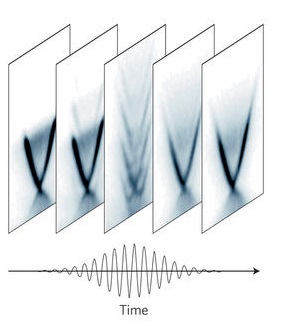Quantum materials are on the ascent. This term embodies a vast portfolio of compounds and phenomena where ramifications of quantum mechanics are demonstrably real. Quantum materials are in the vanguard of contemporary physics in part because these systems afford an exceptional venue to uncover the many roles of symmetry, topology, dimensionality and strong correlations in macroscopic observables. Here we set out to explore the ways and means of creating new states of matter in quantum materials and manipulating their phases via external stimuli.

From Fig. 1: The properties-on-demand approach. Photoexcitation of the surface states in Bi2Se3 crystals results in hybrid light–matter Floquet–Bloch states that manifest themselves as replicas of the original band structure.
Practical control of these properties is a precondition for exploiting quantum advantages in new photonic, electronic and energy technologies, a task of significant societal impact1. We will primarily focus on the following classes of quantum materials: transition metal oxides, Fe- and Cu-based high-Tc superconductors, van der Waals semiconductors, topological insulators and Weyl semimetals, and, finally, graphene.
Read more: Basov, D. N. and Averitt, R. D. and Hsieh, D. (2017) Towards properties on demand in quantum materials. Nature Materials, 16 (11). pp. 1077-1088. ISSN 1476-1122. http://resolver.caltech.edu/CaltechAUTHORS:20170922-102739878



